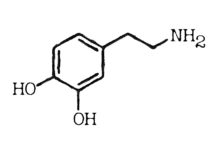Patna, About 90% of the risk for acute myocardial infarction (Heart Attack) comes from modifiable risk factors such as obesity, smoking, drinking, and physical inactivity, as per statistics. Indians are also more prone to this condition due to genetic factors. There is a need to raise awareness on identifying symptoms at an early stage as also prevention to avoid complications.
MI, or a heart attack, is a medical emergency. In this condition, one of the coronary arteries becomes blocked suddenly, and the heart muscle supplied by that artery begins to die. This condition needs early and aggressive medical therapy to stabilize the cardiovascular system and prevent or mitigate long-term complications from the heart attack.
Speaking about this, Dr Manoj Kumar, Director & Head – Cardiac Cath Lab, Max Super Specialty Hospital, Patparganj, New Delhi said, “Acute myocardial infarction or MI is the medical term for a heart attack and can be categorized further into STEMI and non-STEMI. STEMI is a serious condition where one of the arteries supplying oxygen and nutrient-rich blood to the heart muscle gets blocked. Non-STEMI is a less severe form of a heart attack. The best way to prevent an acute heart attack is to reduce the risk factors associated with it. For instance, awareness must be raised on changing to a healthier lifestyle and avoiding habits like smoking and drinking. Habits that increase blood pressure and cholesterol must also be kept under check. This is because buildup of plaque on the walls of arteries is a major contributor to this condition. People with a family history of heart disease should be more careful.”
The symptoms one should watch out for include severe chest pain with sweating, palpitation and breathing difficulty; feeling of black out, sinking down, and cold extremities; extreme lethargy particularly in diabetes patients; chest pain radiating to either or both arms, jaw, and the back region; and severe vomiting or nausea with abdominal discomfort.
Adding further, Dr Manoj Kumar, said, “One should watch out for the warning signs of a heart attack to avoid complications. Necessary lifestyle changes should also be made at the earliest. Awareness about the symptoms can help save lives before actual medical help is at hand.”
Primary angioplasty is the ideal mode of treatment for those who get Heart Attack. Administering a combination of thrombolysis first and angioplasty later can help in minimizing the damage to heart muscles. In angioplasty procedure a thin wire mesh (Stent) mounted on a deflated balloon is then passed through the catheter to the narrowed area. The balloon is inflated; compressing the deposits against the artery walls and leaving expanded stent embedded in the artery. Drug-eluting stents release medication to help heal the stressed arteries post procedure. Few stents are USFDA approved and well-studied for safe use in patients with complications such as diabetes, high bleeding risk or in patients who might have to interrupt medication a month after angioplasty.
Tips to help a person in case of a heart attack
• Make the person lie down flat on a firm surface.
• Clear the airway and allow them to take a few deep breaths.
• Check for the pulse on any one side of the neck.
• If the patient is feeling nauseated, turn them to one side and let them vomit. This will prevent aspiration into the lungs.
• Lastly, raise both the legs to improve the supply of blood to the heart.
• Administer cardiopulmonary resuscitation (CPR) immediately if the person is unconscious.




